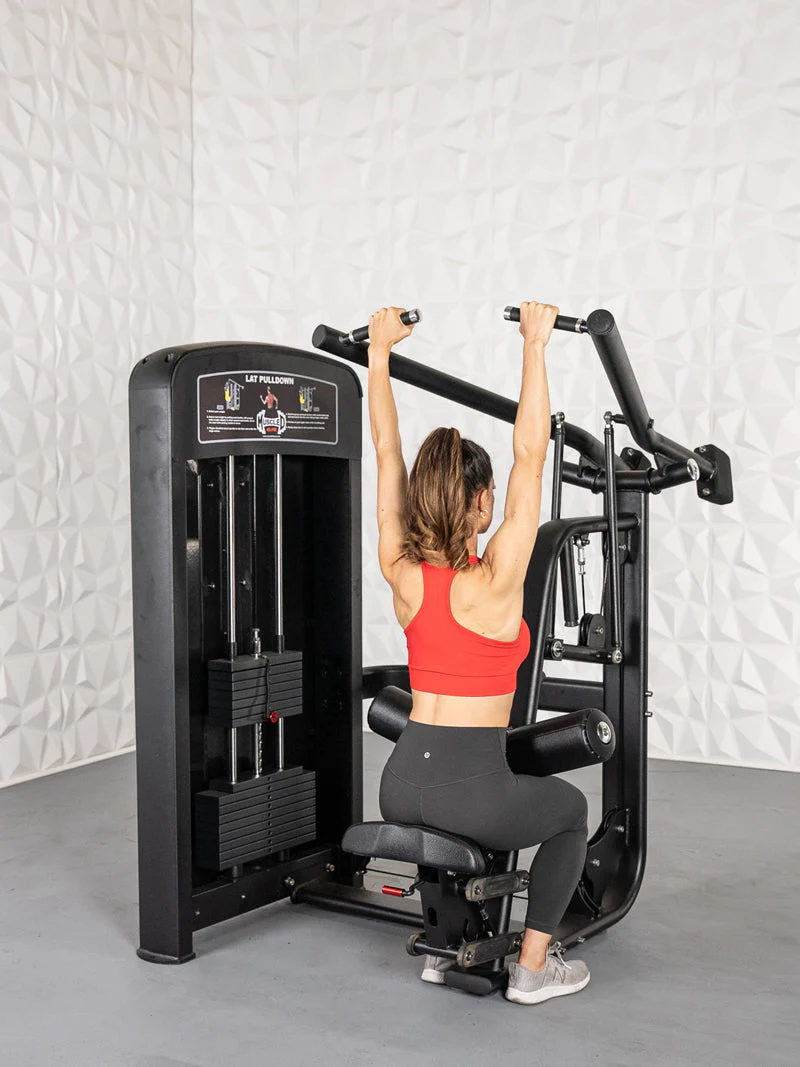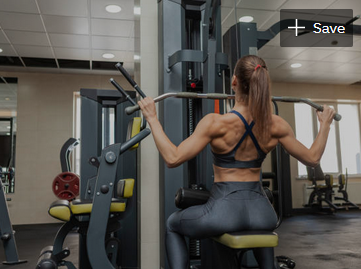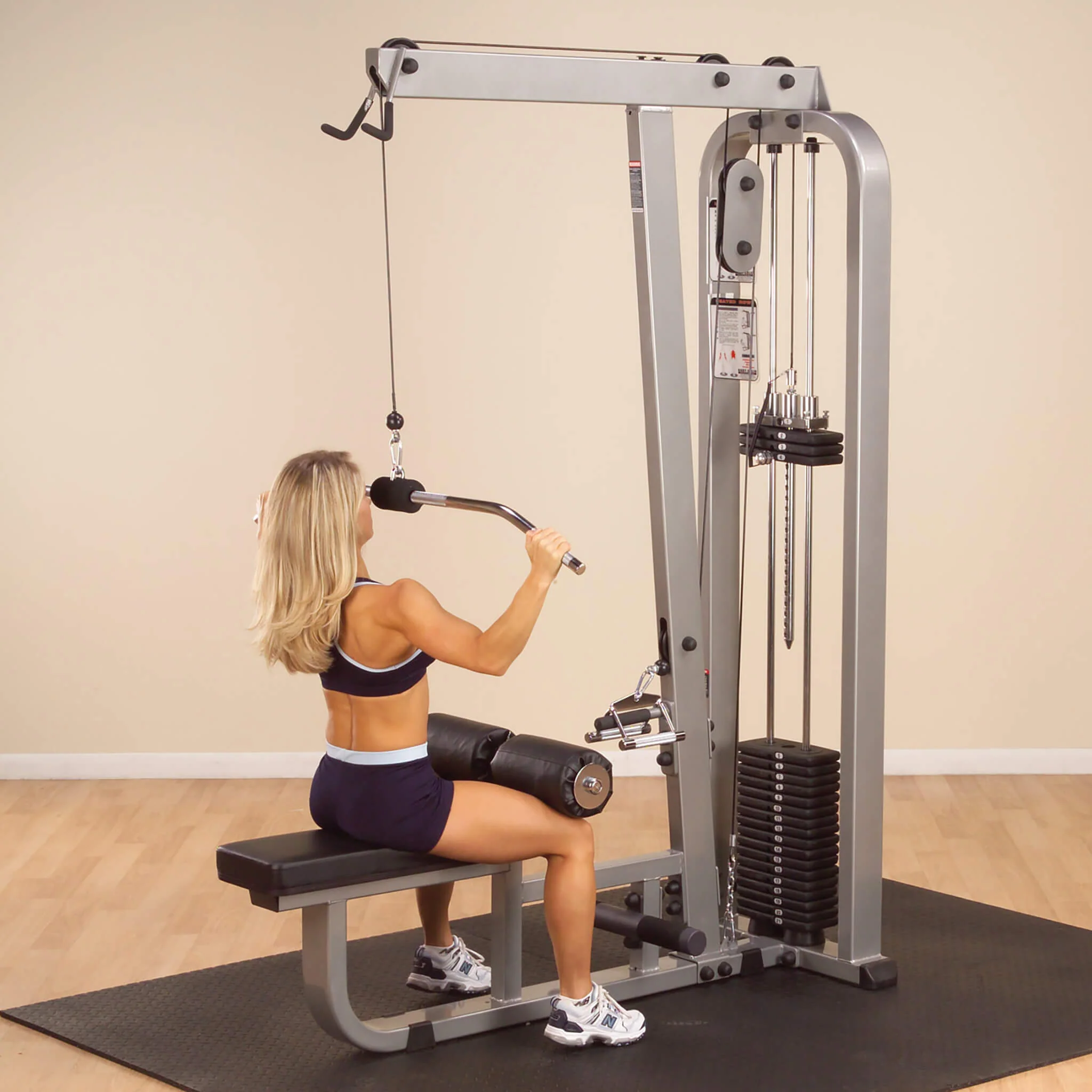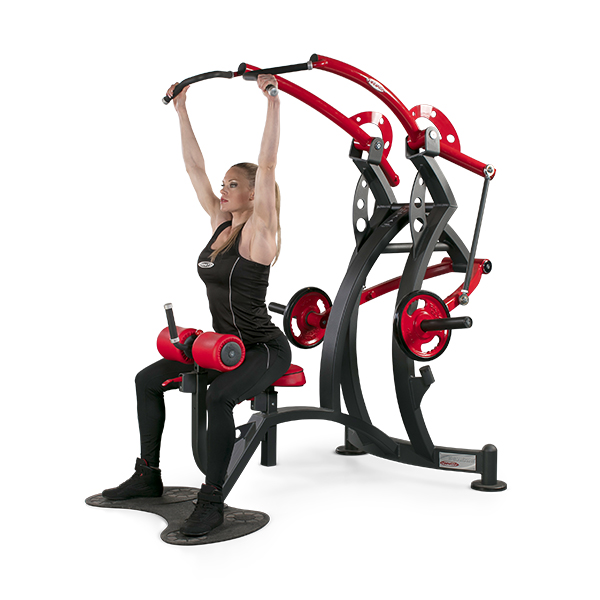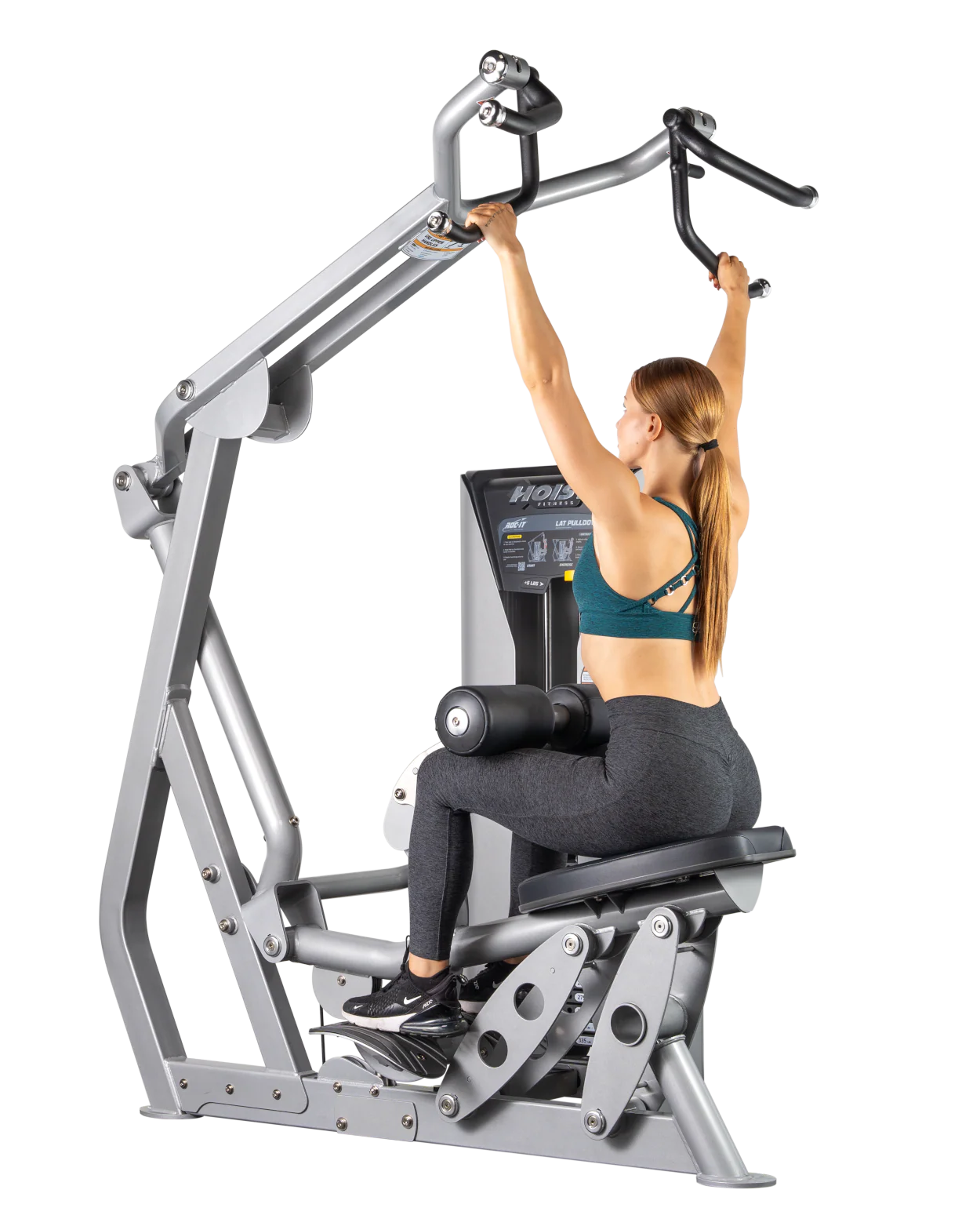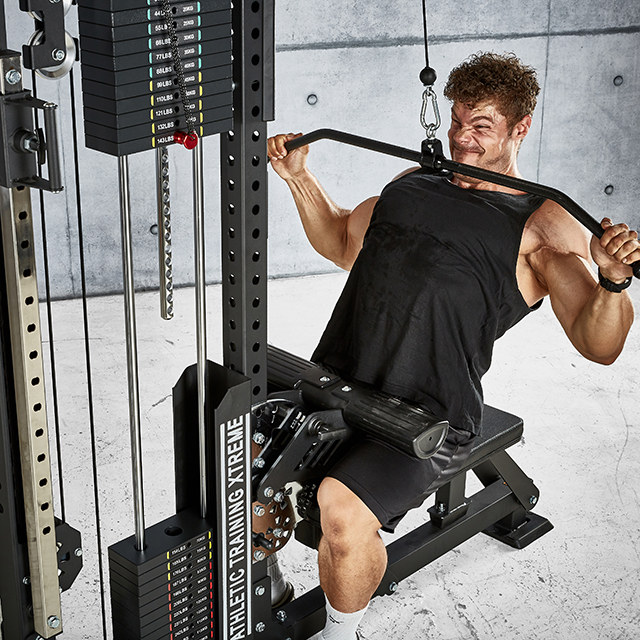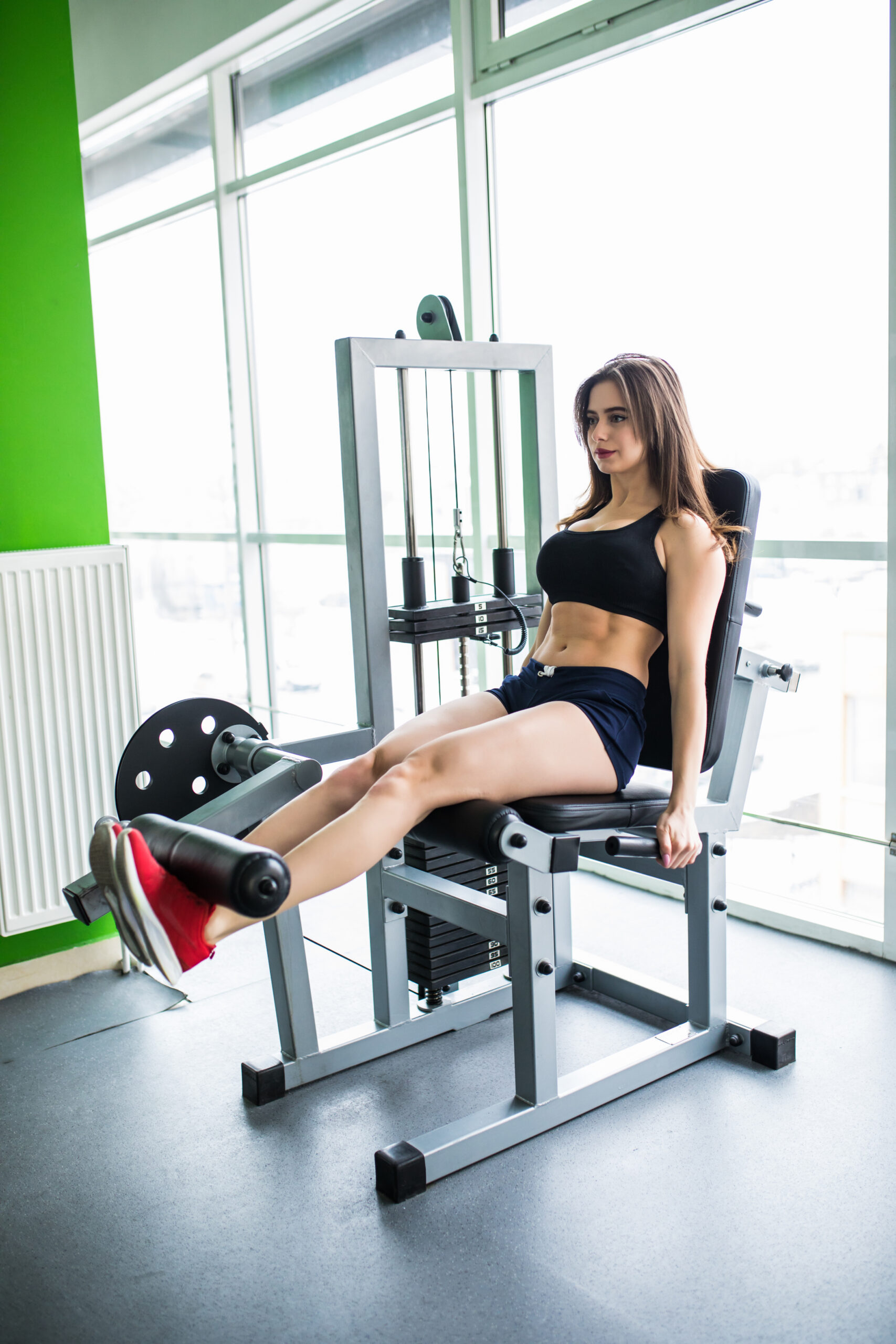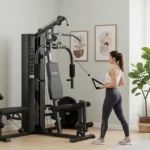By Jodie Carter, Certified Personal Trainer (REPS Level 3) & Home Gym Specialist
You’ve mastered the basic lat pulldown movement, but now what? Many beginners get stuck doing the same wide-grip pulldown week after week, wondering why their progress has stalled. The secret to continued back development lies in exercise variation – and the lat pulldown machine offers far more possibilities than you might think.
Different grip positions, angles, and techniques can transform your lat pulldown machine into a complete back-building arsenal. Based on my 8+ years of experience training over 500 clients, I’ve seen how strategic variation prevents plateaus and accelerates progress toward that coveted V-shaped torso.
This evidence-based guide presents the most effective lat pulldown variations specifically chosen for beginners, each building upon basic movements while introducing new challenges to keep your muscles growing.
Essential Lat Pulldown Variations Every Beginner Should Know
Wide-Grip Lat Pulldown (The Foundation Exercise)
The wide-grip lat pulldown remains the gold standard for lat development and should form the backbone of every beginner’s routine. This exercise specifically targets the outer portions of your latissimus dorsi, creating the width that gives your torso that athletic V-shape.
Why it’s essential for beginners:
- Teaches proper scapular movement patterns
- Maximizes lat muscle activation (studies show 40% greater activation than narrow grips)
- Builds the foundation for all other variations
- Develops the mind-muscle connection crucial for back training
Proper execution:
- Adjust thigh pads to secure legs without restricting blood flow
- Grasp bar with hands positioned 1.5 times shoulder-width apart
- Pull shoulder blades down and back to initiate movement
- Drive elbows down and slightly behind torso
- Pull bar to upper chest, squeeze lats for 1 second
- Return slowly over 2-3 seconds
Close-Grip Lat Pulldown
The close-grip variation shifts emphasis to your middle back muscles and provides stronger bicep involvement, making it feel more natural for many beginners. This exercise is particularly valuable for those who struggle to feel their lats working during wide-grip movements.
Unique advantages:
- Increased range of motion allows for deeper lat stretch
- Better bicep engagement helps beginners “feel” the exercise
- Targets the lower portion of the lats more effectively
- Easier to maintain proper form for most people
Neutral-Grip Lat Pulldown
Using a neutral (palms facing each other) grip position provides the most comfortable wrist and elbow alignment. This variation often allows beginners to use slightly heavier weights while maintaining perfect form – a key finding from my client assessments.
Reverse-Grip (Underhand) Lat Pulldown
The reverse-grip lat pulldown places your biceps in a stronger position while still effectively targeting your lats. EMG studies show this variation produces similar lat activation to wide-grip while significantly increasing bicep involvement.
Evidence-Based Beginner Programming
Week 1-2: Foundation Building
Workout A (2x per week):
- Wide-grip lat pulldown: 2 sets × 10-12 reps
- Rest 90 seconds between sets
- Focus: Perfect form and mind-muscle connection
Workout B (1x per week):
- Close-grip lat pulldown: 2 sets × 10-12 reps
- Wide-grip lat pulldown: 1 set × 8-10 reps
Week 3-4: Adding Variety and Volume
Workout A:
- Wide-grip lat pulldown: 3 sets × 10-12 reps
- Neutral-grip lat pulldown: 2 sets × 10-12 reps
Workout B:
- Close-grip lat pulldown: 3 sets × 10-12 reps
- Wide-grip lat pulldown: 2 sets × 8-10 reps
Pro tip: Increase weight by 2.5kg when you can complete all sets and reps with perfect form.
Week 5-8: Intermediate Progression
Workout A (Monday/Friday):
- Wide-grip lat pulldown: 3 sets × 8-10 reps
- Close-grip lat pulldown: 3 sets × 10-12 reps
- Neutral-grip lat pulldown: 2 sets × 12-15 reps
Workout B (Wednesday):
- Reverse-grip lat pulldown: 3 sets × 8-10 reps
- Wide-grip lat pulldown: 2 sets × 10-12 reps
- Close-grip lat pulldown: 2 sets × 12-15 reps
Expert Tips for Avoiding Common Mistakes
“I Can’t Feel My Lats Working”
Problem: Biceps and forearms fatigue before lats are properly stimulated.
Professional solutions:
- Focus on pulling with elbows, not hands
- Imagine putting elbows in back pockets
- Use lifting straps to reduce grip demands
- Try neutral-grip for better muscle activation
“My Arms Get Tired Before My Back”
Problem: Poor movement initiation and over-reliance on arm strength.
Expert corrections:
- Start each rep by pulling shoulder blades down and back
- Use slightly wider grip to reduce bicep involvement
- Practice movement without weight to learn proper patterns
“I’m Swinging or Using Momentum”
Problem: Using too much weight or poor core stability.
Professional fix:
- Reduce weight by 10-15% and focus on control
- Engage core muscles throughout entire set
- Take 2-3 seconds for each portion of movement
Equipment Selection and Setup
Choosing the right equipment significantly impacts your training success. For detailed guidance on selecting the best lat pulldown machine for your needs, see our comprehensive buyer’s guide for beginners.
If you’re comparing different training methods, our analysis of lat pulldown machines vs pull-ups will help you make an informed decision based on your current fitness level and goals.
Progressive Training Plans
For beginners ready to commit to structured programming, I recommend following our 8-week lat pulldown workout plan. This comprehensive program builds upon the exercises covered here while introducing advanced techniques and periodization principles.
Tracking Progress and Setting Realistic Goals
Essential metrics to track:
- Weight used for each exercise
- Sets and repetitions completed
- Perceived exertion (1-10 scale)
- Weekly training frequency
Realistic timeline for strength gains:
- Month 1: 10-15% strength increase (neural adaptations)
- Month 2: 15-25% increase from baseline
- Month 3: Visible muscle development
- Month 4-6: Steady progression with potential for intermediate variations
According to research from the American College of Sports Medicine, beginners can expect 20-40% strength increases in their first 6 months of consistent training.
Equipment Recommendations
Based on my extensive testing and client feedback, I’ve reviewed the top lat pulldown machines currently available. These reviews consider factors like build quality, smooth operation, and value for money – crucial considerations for beginners investing in their fitness journey.
Expert Recommendations for Complementary Training
Beginner-friendly rowing exercises:
- Seated cable rows: Perfect complement targeting rhomboids and middle traps
- Chest-supported rows: Excellent for maintaining proper posture
- Resistance band rows: Ideal for home training and active recovery
Bodyweight exercises for off-days:
- Wall slides for posture improvement
- Cat-cow stretches for spinal mobility
- Band pull-aparts for rear delt strength
Safety Considerations and Injury Prevention
Throughout my career, I’ve observed that proper form and progressive overload are the keys to injury-free training. Never sacrifice form for heavier weight, and always warm up with light sets before your working weight.
Red flags to watch for:
- Sharp pain during movement
- Inability to maintain proper posture
- Excessive fatigue affecting form in later sets
When to Progress to Advanced Techniques
Signs you’re ready for progression:
- Consistent training for 12+ weeks
- Can perform lat pulldowns with 70-80% of body weight
- Mastered all basic variations with perfect form
- Looking for new challenges and variety
Advanced techniques to consider:
- Drop sets and cluster training
- Unilateral (single-arm) variations
- Pre-exhaustion and post-exhaustion techniques
- Integration with pull-up progression programs
Frequently Asked Questions
Q: How many different lat pulldown exercises should a beginner do in one workout? A: Start with 1-2 variations per session. As you progress, you can include 2-3 different grips, but avoid too many variations in early training phases.
Q: Should I feel lat pulldowns in my biceps? A: Some bicep involvement is normal and expected. However, if your biceps are limiting performance, focus on initiating the movement with your back muscles and consider using lifting straps.
Q: Can I do lat pulldowns every day? A: No, your muscles need 48 hours of rest between intense training sessions. Stick to 2-3 lat pulldown sessions per week for optimal recovery and growth.
Q: What’s the best grip for building width vs thickness? A: Wide-grip lat pulldowns emphasize width development, while close-grip and neutral-grip variations target more thickness and depth. Include both for complete development.
Q: How do I know if I’m ready to progress from lat pulldowns to pull-ups? A: When you can perform lat pulldowns with your full body weight for 8-10 controlled repetitions, you’re likely ready to attempt assisted pull-ups.
Conclusion: Your Path to Back Development Success
Mastering these lat pulldown variations provides the foundation for impressive back development and prepares you for more advanced training techniques. Remember that consistency trumps intensity, especially in your first few months of training.
The journey from beginner to intermediate doesn’t happen overnight, but with the structured approach outlined in this guide, you’ll see meaningful progress within weeks and dramatic changes within months. Keep challenging yourself with new variations, track your progress diligently, and celebrate every milestone along the way.
About the Author
Jodie Carter is a REPS Level 3 certified personal trainer with over 8 years of experience in strength training and home gym design. She holds qualifications in exercise physiology and has helped over 500 clients design effective home workout spaces. Jodie regularly contributes to UK fitness publications and maintains continuing education in the latest exercise science research.
Credentials:
- REPS Level 3 Personal Trainer Certification
- Exercise Physiology Qualification
- 8+ years professional experience
- 500+ clients successfully trained
- Regular contributor to UK fitness publications
Disclosure: This article contains affiliate links to products I personally use and recommend. When you purchase through these links, I may earn a small commission at no additional cost to you. All recommendations are based on my genuine experience and testing—I only recommend products I actually use in my own home.

Jodie Carter is a REPS Level 3 certified personal trainer with over 8 years of experience in strength training and home gym design. She holds qualifications in exercise physiology and has helped over 500 clients design effective home workout spaces. Jodie regularly contributes to UK fitness publications and maintains continuing education in the latest exercise science research.
Disclosure: This article contains affiliate links to products I personally use and recommend. When you purchase through these links, I may earn a small commission at no additional cost to you. All recommendations are based on my genuine experience and testing—I only recommend products I actually use in my own home.

